The AMD Ryzen Threadripper 3960X and 3970X Review: 24 and 32 Cores on 7nm
by Dr. Ian Cutress, Andrei Frumusanu & Gavin Bonshor on November 25, 2019 9:05 AM ESTGaming: Grand Theft Auto V
The highly anticipated iteration of the Grand Theft Auto franchise hit the shelves on April 14th 2015, with both AMD and NVIDIA in tow to help optimize the title. GTA doesn’t provide graphical presets, but opens up the options to users and extends the boundaries by pushing even the hardest systems to the limit using Rockstar’s Advanced Game Engine under DirectX 11. Whether the user is flying high in the mountains with long draw distances or dealing with assorted trash in the city, when cranked up to maximum it creates stunning visuals but hard work for both the CPU and the GPU.
For our test we have scripted a version of the in-game benchmark. The in-game benchmark consists of five scenarios: four short panning shots with varying lighting and weather effects, and a fifth action sequence that lasts around 90 seconds. We use only the final part of the benchmark, which combines a flight scene in a jet followed by an inner city drive-by through several intersections followed by ramming a tanker that explodes, causing other cars to explode as well. This is a mix of distance rendering followed by a detailed near-rendering action sequence, and the title thankfully spits out frame time data.
There are no presets for the graphics options on GTA, allowing the user to adjust options such as population density and distance scaling on sliders, but others such as texture/shadow/shader/water quality from Low to Very High. Other options include MSAA, soft shadows, post effects, shadow resolution and extended draw distance options. There is a handy option at the top which shows how much video memory the options are expected to consume, with obvious repercussions if a user requests more video memory than is present on the card (although there’s no obvious indication if you have a low end GPU with lots of GPU memory, like an R7 240 4GB).
All of our benchmark results can also be found in our benchmark engine, Bench.
| AnandTech | IGP | Low | Medium | High |
| Average FPS | 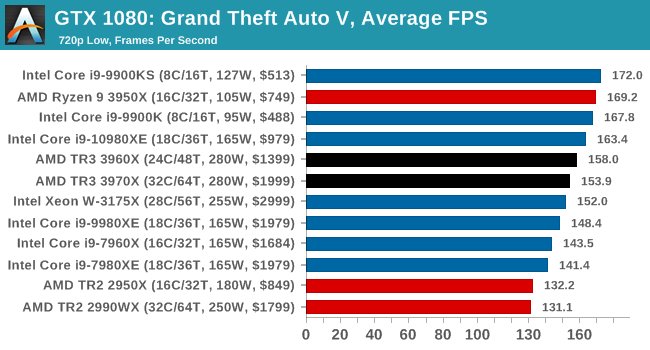 |
 |
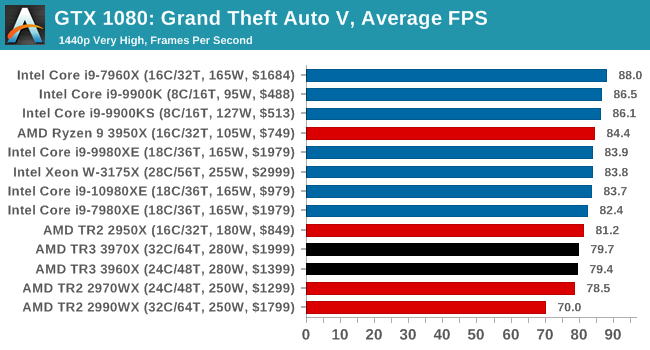 |
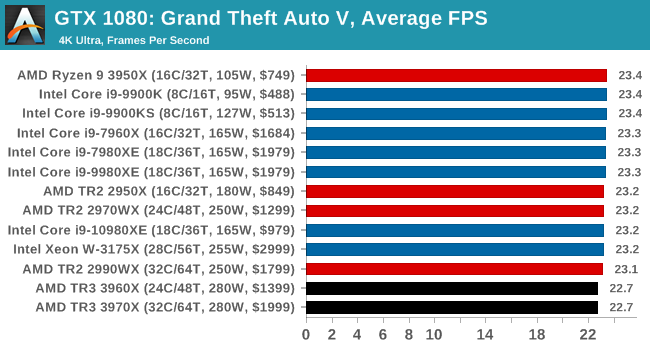 |
| 95th Percentile |  |
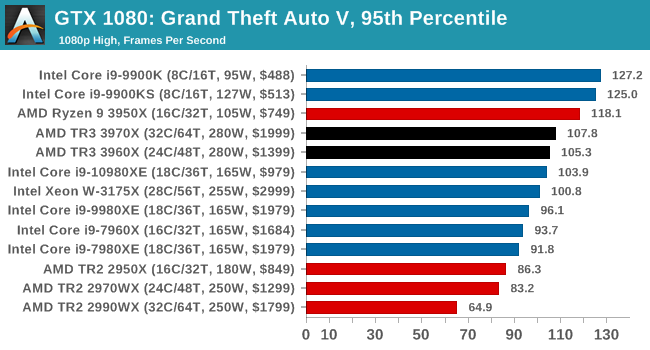 |
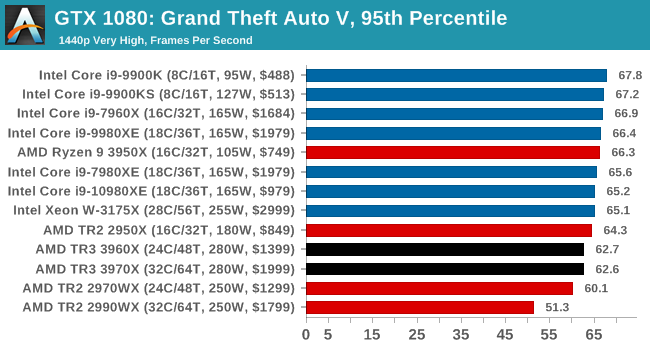 |
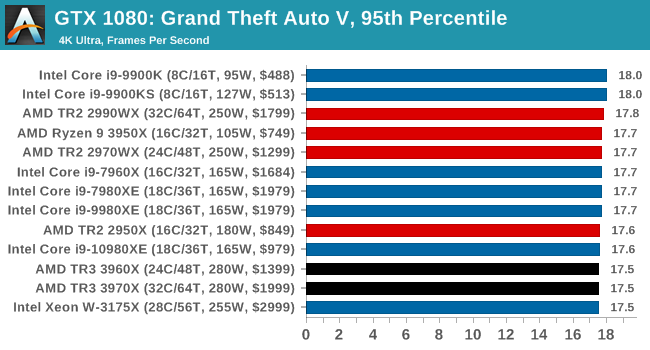 |


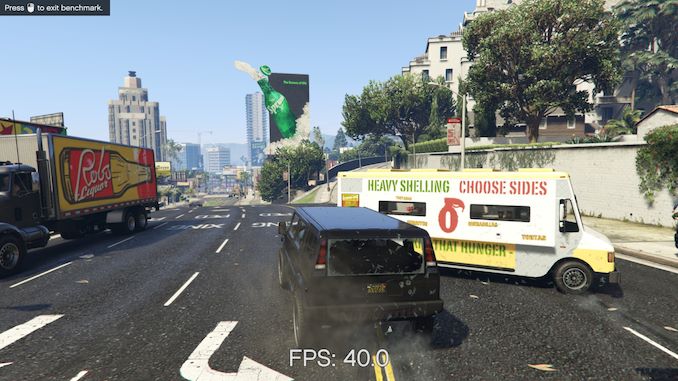









245 Comments
View All Comments
Xyler94 - Tuesday, November 26, 2019 - link
No, Dell EMC and HPE have both gone Epyc, Amazon is getting Epycs, Azure is getting Epycs, Google's Stadia runs on Epyc (That's another discussion though). Lots of big names are running Epyc now. It takes years to validate server equipment, unlike the enthusiasts, who can afford a bit of downtime here and there, servers cannot. So they experiment with new hardware for a year or two before implementing it. Remember that the 1.5 Exaflop Supercomputer is gonna be powered by AMD CPUs also.AMD is making big wins, but it takes a lot of time for the numbers to show
Teckk - Monday, November 25, 2019 - link
True, but neither does living in denial. So Intel launched their HEDT for half the price they would've otherwise launched, why would they if it was so good and would sell like crazy?Ignoring problems like 10nm and just quoting numbers gets boring quickly.
Total Meltdowner - Monday, November 25, 2019 - link
It's only downhill now.Supercell99 - Tuesday, November 26, 2019 - link
Also, AMD earnings are $0.03 per share. So really INTL can give their chips away for a few years if they wanted and crush amd until they get the performance advantage again. I love that AMD is back we need competition, but lets be real. To think INTEL is out of this is idiotic.bigvlada - Wednesday, November 27, 2019 - link
You might want to read about what happened when American Tobacco Company tried to give products for free in order to crush the competition.Marburg U - Monday, November 25, 2019 - link
Hmmm, still on QX9770 here. Will wait the next gen.o_O
ShowsOn - Monday, November 25, 2019 - link
Your CPU is slower than the US$49 Athlon 3000G that AMD released last week.peevee - Tuesday, November 26, 2019 - link
Actually, that would be a fun comparison. 4 10 y/o cores @3.2, vs 2 1.5-y/o cores+SMT @3.5...Teckk - Monday, November 25, 2019 - link
Agree with you on the price, maybe a little too expensive?When is the next new (non-Skylake) Intel chip coming? Is that TigerLake or Saphire Rapids in 2021?
Irata - Monday, November 25, 2019 - link
When comparing prices, let's not forget that Intel prices are OEM (when buying 1,000) units whereas TR prices are MSRP.But looking at actual performance and platform features, I honestly cannot see anyone who is not already on X299 even paying that much.